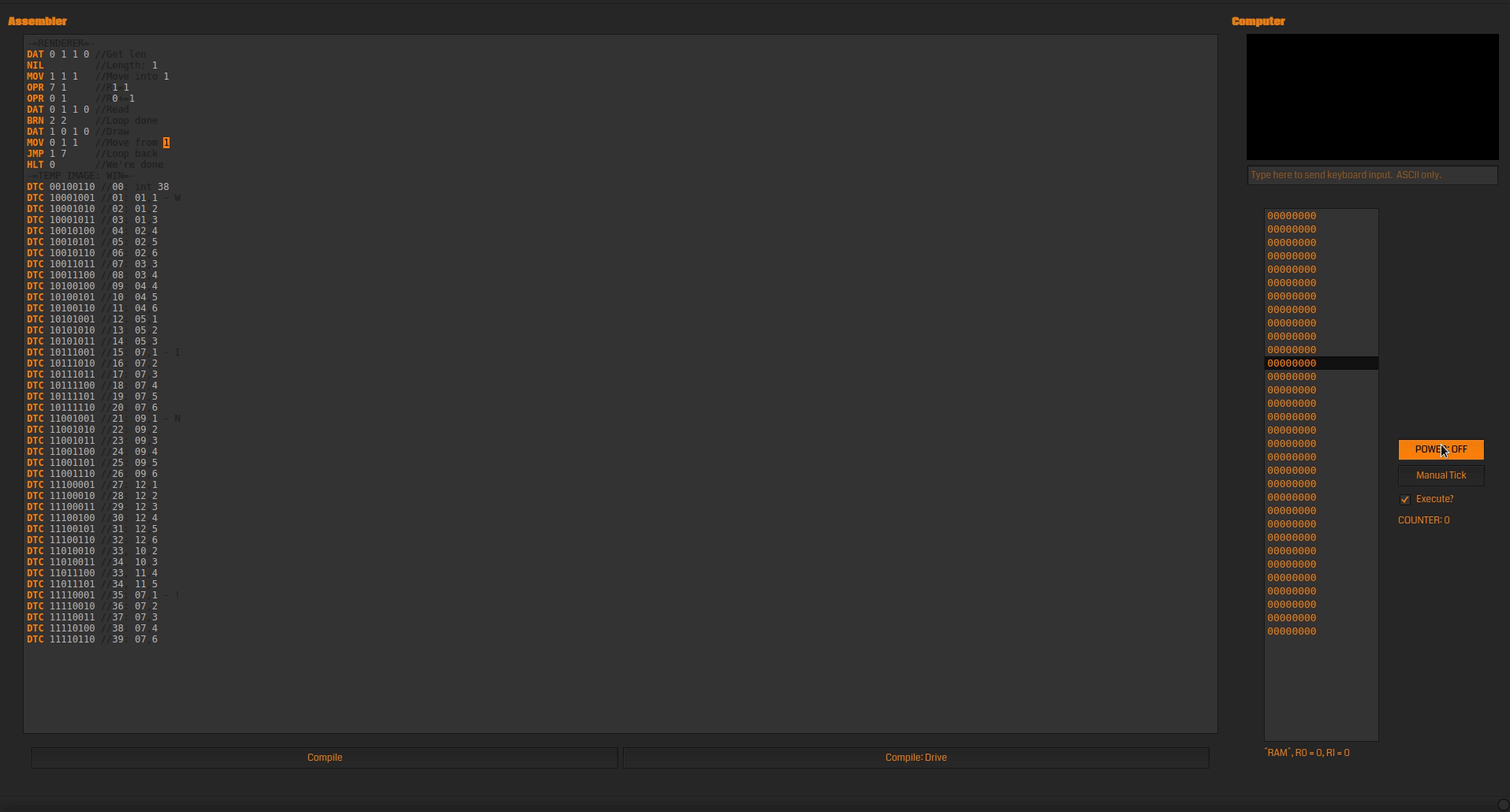I figured it was only a matter of time before some sort of emulation/virtual machine was made in Senbir. But...I'd basically figured the first would be a glorified bootloader, sorta like what I set up in the multitasking kernel. This is...stupidly impressive, to vastly understate it.
(I really need to just get around to releasing the current update. Been horrendously sidetracked by Warframe & working on/off on Astronaut Plus Skateboard lately. Well, that, and also the RISC-06 system...did I post about that yet?)
If functionality breaks in Default mode, I'd say it's probably not compatible/doesn't fit. Especially if that entails Unity blowing up - it'll almost certainly throw a fit about the array being out of bounds if one tries to copy the emulator onto the Default mode disk.
Makes me wonder how feasible it would be to make swap a thing; it could potentially get around the issue of RAM being nigh-on useless if you used RAM solely to hold a swap system that can use part of a disk (or a whole disk, when/if I get around to adding multi-disk setups to Custom Mode) - programs would suffer a performance hit, sure, but on the flip side, you get more RAM to work with, dynamic address remapping (means your programs don't need to sit sequentially in ram, which would make memory management so much easier), and maybe marginally less self-modifying everything.
I can't say as that I have anything smart to say about the slowdown, so just: whoa. That's impressive levels of performance drop.
I'm not entirely clear on the finer details of multithreading/multitasking, but I can see how this would make for a decent multitasking system.
(Also: if "secret higher-resolution" mode on the monitors is extended SETDATA ops; those were absolutely not intended to provide a max resolution increase. If the game doesn't explode violently when you go above 32 bits for color+width+height? I have no intention of changing that - unintentional cool features are still features!)
(Also, once again, pre-emptive apologies for loopiness & lateness and such. I really, really need to go to bed at more sane hours. And, like, not procrastinate until going to bed at insane hours is necessary >.<)


